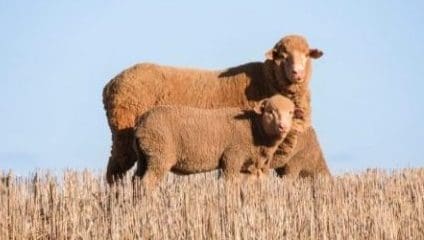
Most sheep producers will rebuild flocks without buying ewes.
MOST Australian sheep producers intend to maintain or increase their breeding ewe flock without buying in over the next 12 months, a recent survey has indicated.
Meat & Livestock Australia said 94 percent of respondents to the February 2021 Sheep Survey said they expected to increase or maintain their breeding ewe numbers over the next 12 months.
As at February 2021, there were 41.3 million breeding ewes of which 31.4 million, or 76pc, are Merinos. It is these breeding ewes that will drive the rebuild, MLA said.
The survey found that as producers look to utilise more ewes to rebuild their flocks, only 30 percent are looking at buying in more external breeding ewes – most are looking to retain more replacement ewes, or reduce the number of ewes culled.
On a state basis, the results varied significantly, with ewes on hand in Western Australia down 200,000 head since last year due to dry conditions. MLA said also interesting in the survey results was the drop of more than 1 million breeding ewes in the Mallee/Wimmera region, as improved seasonal conditions drove farmers to increase their cropping operations, choosing to trade sheep rather than breed them.
Merinos to dominate lamb sales
The survey also found that of the 8,005,144 total lamb sales expected from 1 March to 30 June this year, 41pc will be Merinos, 25pc will be pure meat breeds and 19pc will be first cross.
The survey indicated that 66pc of lambs on hand are Merinos and 71pc of ewes joined were Merinos.
The February wool and sheep meat survey is conducted by Meat & Livestock Australia (MLA) and the Australian Wool Innovation. The results are used by industry in forecasting the future size of the flock and lamb production.



A ewe is said to be cheap if she returns her purchase price to you in the first 12 months, but dear if she takes two years. So it is good economics to buy ewes if you have a breed that achieves high to very high weaning percentages (eg 1.5-2 lambs/ewe per year), because their return on investment is so rapid. The reverse, low reproductive rates, is symptomatic of the continuing decline of Merinos in the national flock, as shown in this article, based on reproduction physiology differences alone with prices, which show little differentiation between breeds and poor prices for wool.